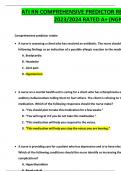Samenvatting
Complete Summary of Economics of the Public Sector (including lectures)
- Vak
- Instelling
- Boek
Complete Summary of Economics of the Public Sector (including lectures) ECB2EPS, period 4, 2021. Including graphs from the book and lectures.
[Meer zien]













